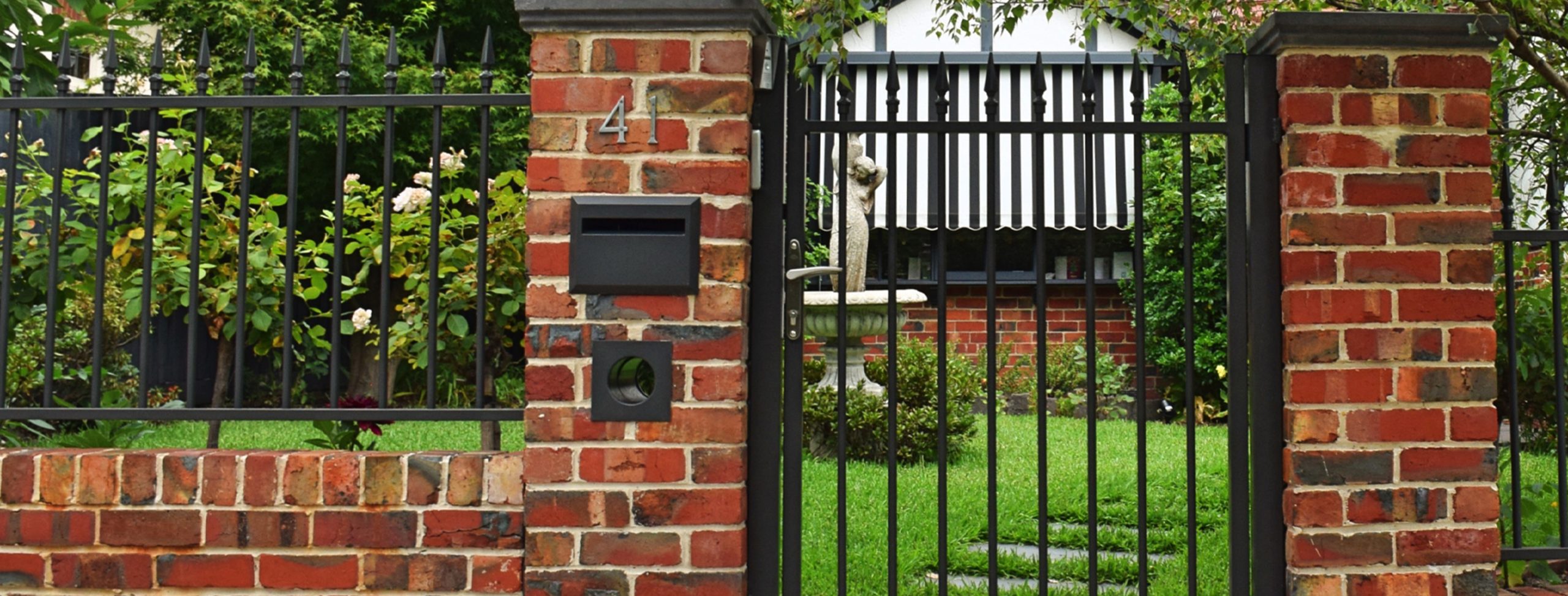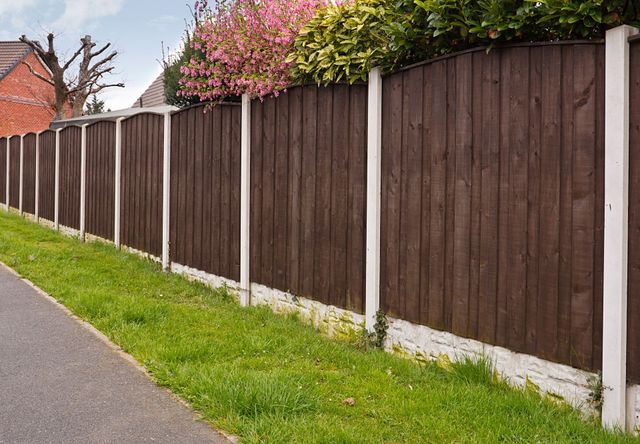All Categories
Featured
Whether your fence is made of wood, steel, chain, or plastic link, adhering to some standard upkeep suggestions can assist ensure its longevity and performance. Right here's just how you can keep your fencing in great condition year-round.
![]()
Wooden Fencings: Utilize a stress washing machine with a low-pressure setting to carefully eliminate dirt and particles. For persistent spots or mold, scrub the influenced areas with a mix of water and mild cleaning agent or a vinegar solution. Vinyl Fencings: Vinyl fencings are simple to tidy with soapy water and a soft brush. Stay clear of rough products, as they can scratch the surface area. Steel Fences: Aluminum or wrought iron fences can be cleaned up with a soft cloth or sponge saturated in soapy water. For corrosion, utilize a rust eliminator particularly made for steel surface areas. Chain Link Fences: A basic wash with a pressure or a hose washer can remove debris from wire mesh fence. You might additionally need to trim any type of plants growing near the fence. 2. Look for Damages and Make Services Promptly. Fences are revealed to the aspects year-round, which suggests wear and tear is inescapable. Frequently checking your fence for any type of indications of damages-- such as loose boards, damaged messages, corrosion spots, or splits-- is vital to stop further damage. For wooden fences, check for deteriorating or bending of the planks. Metal fencings may establish corrosion spots, while plastic fences can come to be brittle or cracked in extreme climate condition.
If you locate any kind of concerns, make fixings asap. Tiny solutions, such as changing a couple of loosened or damaged boards, can prevent larger, much more pricey fixings down the line. For corrosion, you can sand it down and use a coat of rust-resistant paint to extend the life of the metal.
If your wooden fencing is repainted, look for peeling paint and touch up any spots to maintain its appearance and shield the timber from the components.
Additionally, be conscious of dropped branches or leaves, specifically in fall, as they can cause and gather moisture build-up, bring about rotting or rusting, specifically in wooden and metal fences.
![]()
![]()
Final thought. Normal upkeep is crucial to maintaining your fencing looking fantastic and functioning appropriately for many years. Whether you have a wooden, steel, vinyl, or chain link fencing, adhering to these pointers will certainly assist you maintain its elegance and toughness.
- Routine Cleaning. Cleaning your fence frequently is one of the simplest and most effective ways to keep it in top shape. Over time, dirt, mildew, algae, and mold and mildew can build up, specifically on wood fencings.

Wooden Fencings: Utilize a stress washing machine with a low-pressure setting to carefully eliminate dirt and particles. For persistent spots or mold, scrub the influenced areas with a mix of water and mild cleaning agent or a vinegar solution. Vinyl Fencings: Vinyl fencings are simple to tidy with soapy water and a soft brush. Stay clear of rough products, as they can scratch the surface area. Steel Fences: Aluminum or wrought iron fences can be cleaned up with a soft cloth or sponge saturated in soapy water. For corrosion, utilize a rust eliminator particularly made for steel surface areas. Chain Link Fences: A basic wash with a pressure or a hose washer can remove debris from wire mesh fence. You might additionally need to trim any type of plants growing near the fence. 2. Look for Damages and Make Services Promptly. Fences are revealed to the aspects year-round, which suggests wear and tear is inescapable. Frequently checking your fence for any type of indications of damages-- such as loose boards, damaged messages, corrosion spots, or splits-- is vital to stop further damage. For wooden fences, check for deteriorating or bending of the planks. Metal fencings may establish corrosion spots, while plastic fences can come to be brittle or cracked in extreme climate condition.
If you locate any kind of concerns, make fixings asap. Tiny solutions, such as changing a couple of loosened or damaged boards, can prevent larger, much more pricey fixings down the line. For corrosion, you can sand it down and use a coat of rust-resistant paint to extend the life of the metal.
- Deal With Wooden Fences for Weather Condition Defense. Wood fencings are particularly susceptible to weather damage. Sunlight, snow, rainfall, and humidity can create timber to increase, contract, warp, and deteriorate gradually. To avoid this, treat your wooden fencing with a safety sealer or discolor. This will certainly aid fend off water, block UV rays, and stop mold and mildew growth. You should reapply the treatment every 2-3 years to keep its protective barrier.
If your wooden fencing is repainted, look for peeling paint and touch up any spots to maintain its appearance and shield the timber from the components.
- Maintain Greenery in Check. Hedges and plants growing near or on your fence can cause considerable damages. Roots from nearby trees or bushes might invade the area around fencing posts, destabilizing them.
Additionally, be conscious of dropped branches or leaves, specifically in fall, as they can cause and gather moisture build-up, bring about rotting or rusting, specifically in wooden and metal fences.

- Reapply Safety Coatings for Steel Fences. Steel fences, such as wrought iron or aluminum, can last for years with the appropriate treatment. Nevertheless, steel is susceptible to corrosion, specifically when revealed to dampness. Reapply safety coverings, such as rust-resistant paint, every couple of years to keep your fence looking great and shield it from the elements. Examine for indicators of rust and address it quickly with a cord brush and touch-up paint.
- Maintain the Fencing's Architectural Integrity. For wooden fences, inspect the base of the articles for indicators of rot. For metal and plastic fencings, inspect the articles for any flexing or damages.

Final thought. Normal upkeep is crucial to maintaining your fencing looking fantastic and functioning appropriately for many years. Whether you have a wooden, steel, vinyl, or chain link fencing, adhering to these pointers will certainly assist you maintain its elegance and toughness.
Latest Posts
Find Out Cut Costs on Car Maintenance with Montclare Auto Repair’s Exclusive Deals
Published May 28, 25
1 min read
Check Out Montclare Auto Repair’s Top Auto Repairs and Why Drivers Trust Them
Published May 25, 25
1 min read
How to Know When Your Car Needs Professional Vehicle Service at Montclare Auto Repair
Published May 24, 25
1 min read
More
Latest Posts
Find Out Cut Costs on Car Maintenance with Montclare Auto Repair’s Exclusive Deals
Published May 28, 25
1 min read
Check Out Montclare Auto Repair’s Top Auto Repairs and Why Drivers Trust Them
Published May 25, 25
1 min read
How to Know When Your Car Needs Professional Vehicle Service at Montclare Auto Repair
Published May 24, 25
1 min read